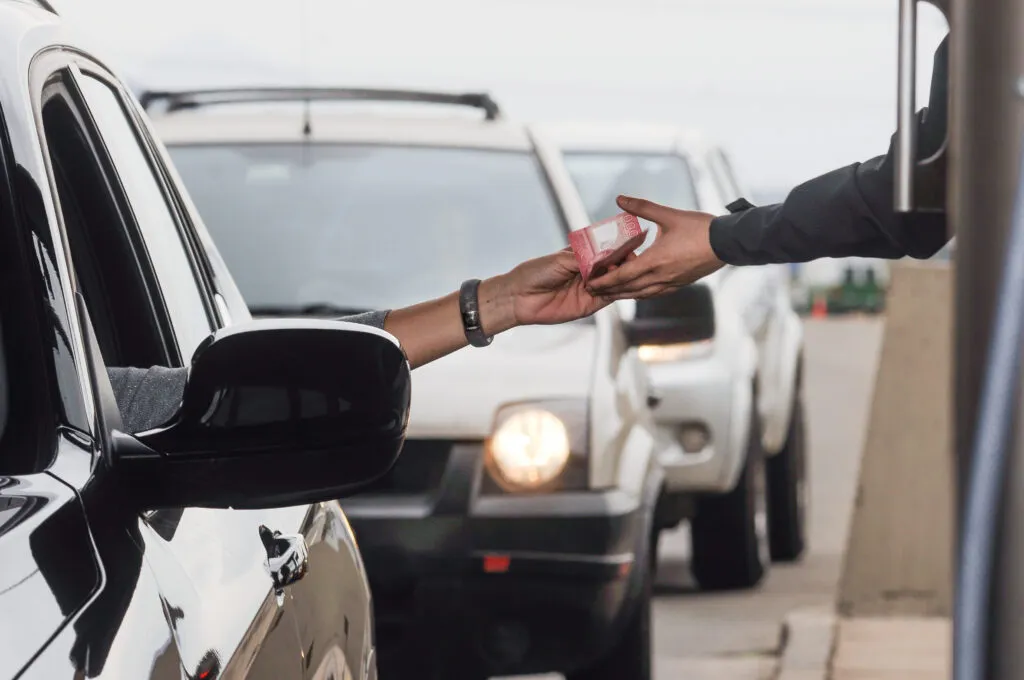
Get home early with RoadWarrior.
Enter your stops, optimize your routes, manage your team – quickly and efficiently.
Try RoadWarrior free for 7 days
Try free for 7 daysYou’ve spent most of your weekend hanging out on the sofa and avoiding the bad weather, but your employer expects you to show up for work on Monday morning even when the forecast calls for heavy snow. When the weather turns nasty, the last thing you want to do is get in your car and travel, but staying at home isn’t always an option. Driving in foul weather can be scary, though. Not only do you have to contend with the difficulty of navigating during low-visibility conditions such as snowstorms, you also have to worry about the unexpected situations that you might encounter out on the road.
According to a study published in 2005, bad weather is a factor in nearly 30 percent of total crashes each year. And while fatal crashes decrease during snowfall, accidents in general tend to increase [source: American Journal of Public Health]. But rather than get on the road and simply worry about what might happen, you can prepare yourself. In addition to learning how to drive in foul weather, there are several things that you can do to make your car safer for driving in bad weather. It all starts with making sure that your car is in peak condition.
5: Do Basic Maintenance
Even if you’re already following the manufacturer’s suggested maintenance schedule for your vehicle, it’s a good idea to go for a tune-up before winter comes. Finding yourself broken down by the side of the road is always a bad situation, but it’s even worse when it’s freezing outside. That’s why it’s worth spending the money to get your car some basic maintenance. You can do some of it yourself, of course, if you’re so inclined. But if you’re not a car person, take your car to your local mechanic.
Start out with checking your car’s fluids — oil, transmission, coolant/antifreeze and brake. If it’s already time for an oil change, your mechanic will typically go ahead and check the others, topping them off or draining and replacing them as necessary. Other things to check include your exhaust system, lights and hazards. If your windshield wipers look ragged or aren’t clearing water well from your windshield, have them replaced or buy new ones and replace them on your own. Finally, make sure that your defogger/defroster and heater are operating normally.
There’s another important part of your car that needs attention before you set off in foul weather: your tires.
4: Check Your Tires
You may not think too much about your tires when you’re driving around, but when you have a problem, their condition suddenly becomes very important. Buying new tires can be a significant expense, but your safety is well worth it. Balding tires could cause you to skid in bad weather and have an accident, and changing a flat tire in a blinding snowstorm isn’t a fun prospect, either.
First, check your tire’s tread. The easiest way to do this is to use the “penny test.” Grab a penny between your first finger and thumb at the opposite end of Lincoln’s head. Then, choose a point on a tire where the tread is the lowest, and insert the penny into a groove on the tread. If the head is covered up by the tread, then you’re good to go. But if you can see above Lincoln’s head, then it’s time to buy new tires. It’s actually illegal in some states to drive with tires that have treads at less than 2/32 of an inch. This is the distance from the top of Lincoln’s head to the rim of a penny.
Next, do a visual inspection of your car’s tires — you might notice a nail head before it causes a flat. You should also check your tire pressure to make sure that they’re inflated to the recommended level. This can typically be found on the inside of your car’s doors. Get your tires rotated according to your car’s maintenance schedule. If you need new tires, be sure to buy ones that are right for your car.
You might need to go beyond just getting new tires to ensure that you’re safe when driving on snowy, icy roads. Learn about tire chains next.
3: Invest in Snow Chains
For most of us, all-weather radial tires are sufficient to keep our tires gripping the road as we drive. But if you live in mountainous areas that get a lot of snow, you might need to buy snow tires or snow chains for your tires. Snow tires are made of softer rubber and have smaller treads to allow for better traction. If you decide that you need them, you’ll have to switch back to regular tires when the weather changes.
Snow chains are just what they sound like — bundles of metal chain links designed to fit snugly around your tires. There are also alternatives, such as traction cables, that are made out of cable instead of metal. Before considering whether you need them, look up your state’s laws. Some states require them at certain times of year, in certain conditions or when signs call for them. Other states allow but don’t require snow chains, and some states don’t allow them in certain locations because the chains can damage road surfaces.
Typically snow chains come in pairs because they’re meant to be used on the car’s drive tires. If your car has front-wheel drive, you’ll need chains for just your front tires. Make sure that you get the right type and size for your car’s tires. Practice installing the chains before you need them (unless you intend to have a mechanic install them). Snow chains aren’t meant to be used on dry surfaces, and driving with them reduces your car’s fuel efficiency. You’ll also need to drive slower — generally not faster than 30 mph (48 kph).
2: Buy Salt, Sand or Kitty Litter
If you’re not familiar with driving in foul weather, this tip might throw you a little bit. What do these things have to do with snow and ice? Turns out they’re of vital importance when getting from point A to point B. When your tires can’t find traction on the roads, you can get yourself going again if you have a supply of salt, sand or kitty litter with you.
Before you start buying up a supply of table salt, you should know that the salt used to de-ice roads isn’t the same. Typically, “road salt” is sodium chloride in the form of rock salt, which has been crushed and mixed with another compound to keep it from caking. When you spread the salt over ice, it dissolves in the water and lowers the freezing point. Spreading the salt onto ice and snow lowers the water’s freezing point, melts it and keeps it from refreezing. However, salt can also be corrosive, and it doesn’t work to melt ice if the temperature is lower than 15 degrees Fahrenheit (9 degrees Celsius).
Sand and kitty litter provide traction for your car’s tires rather than melting anything. If you find yourself stuck, pour a thin layer of either material directly in the path of your tires (after using a shovel to clear away any loose snow), then slowly apply the gas.
Our last tip for making your car safer for driving in foul weather involves putting together a kit.
1: Stock an Emergency Car Kit
You may have an emergency car kit of sorts already, with basic items that can be useful regardless of the weather. A first aid kit is a necessity; it should contain bandages, gauze, antibiotic ointment and tape. You should also have a flashlight, and periodically check its batteries to make sure that it’s still working. We all have cell phones these days, but they also tend to die when we need them most, so think about getting an instant cell phone battery recharger. Reflective triangles, road flares and a distress sign will alert other drivers of your predicament. Keep a small tool kit equipped with basic tools, such as a crescent wrench and adjustable screwdriver. Make sure you have a tire jack and tire sealant in case of flats. Jumper cables are a must, but consider getting a battery recharger that doesn’t require another car.
For bad weather, you’ll need to add a few more items that can make all the difference when you’re stuck in the snow and ice. These include an ice scraper and small shovel to clear away snow and ice. If your car or truck has the capability to tow, consider stocking a tow rope. An emergency radio can keep you apprised of the weather conditions. If it takes a long time for help to arrive, you’ll need a way to stay warm. Keep a blanket or sleeping bag, as well as warm winter clothing, in the kit. Finally, stock some high-energy foods such as nuts or energy bars as well as some water. Some of these items will need to be replaced as necessary. The likelihood of you needing to use your kit is low, but it’s better to be safe than sorry.
Driving in foul weather can be a challenge, but you can make your car safer and make it a better experience. Happy driving!
Content written by Shanna Freeman and created in partnership with HowStuffWorks.com


